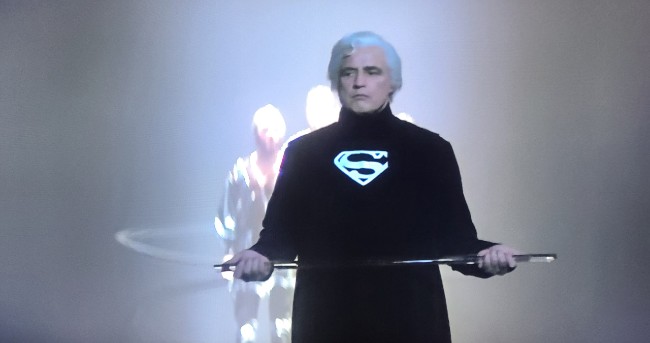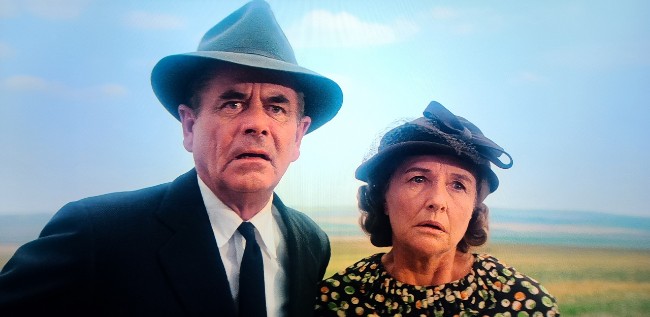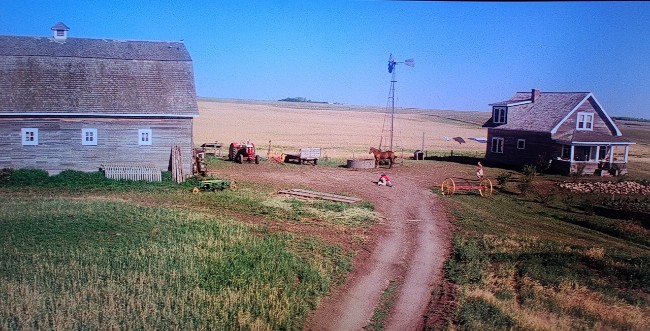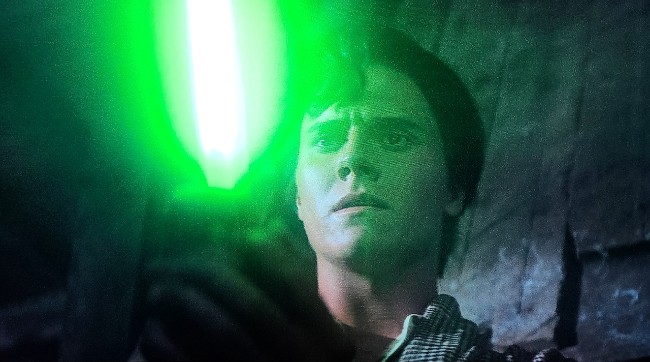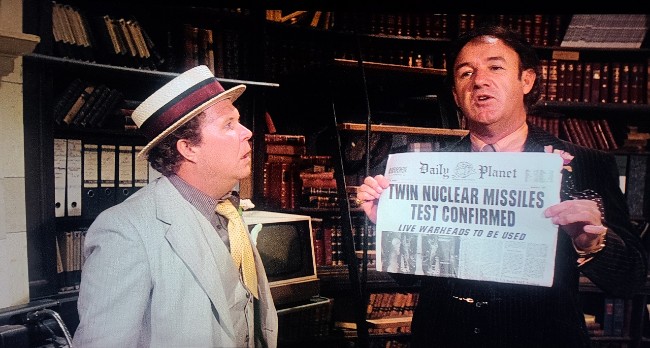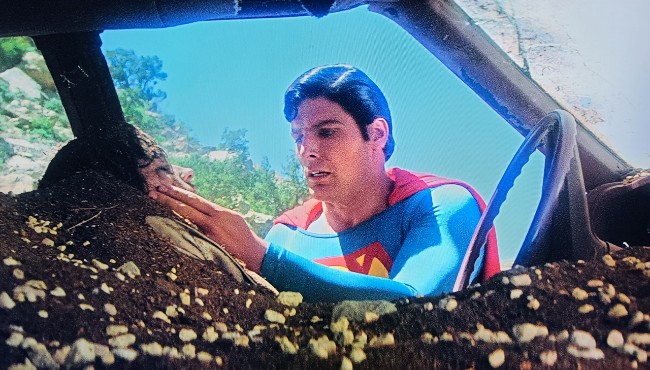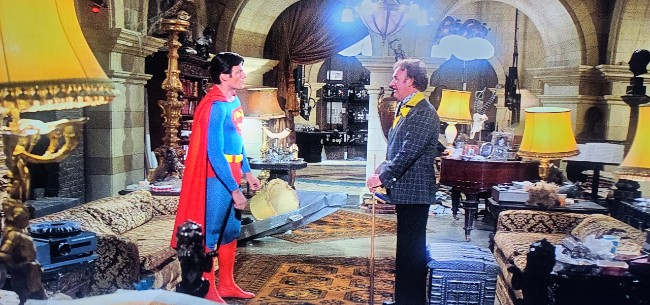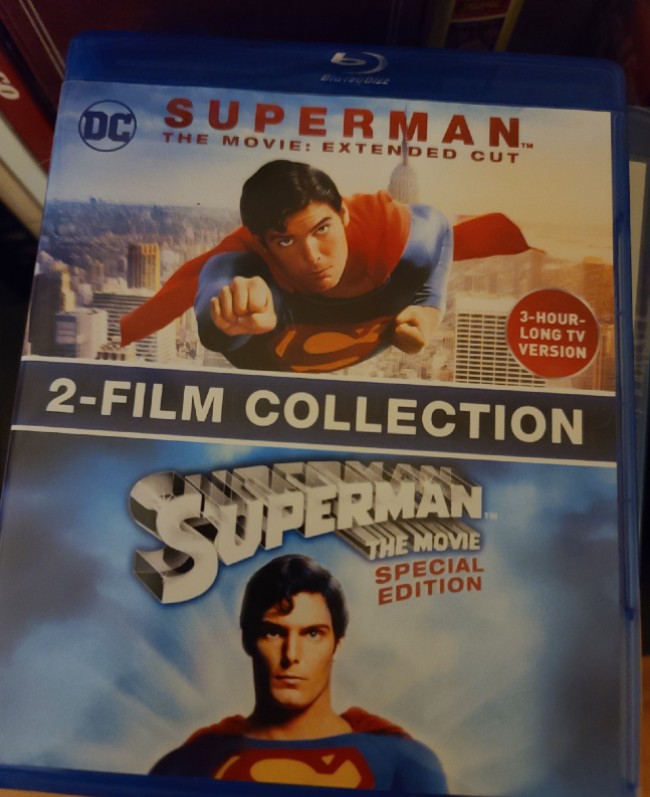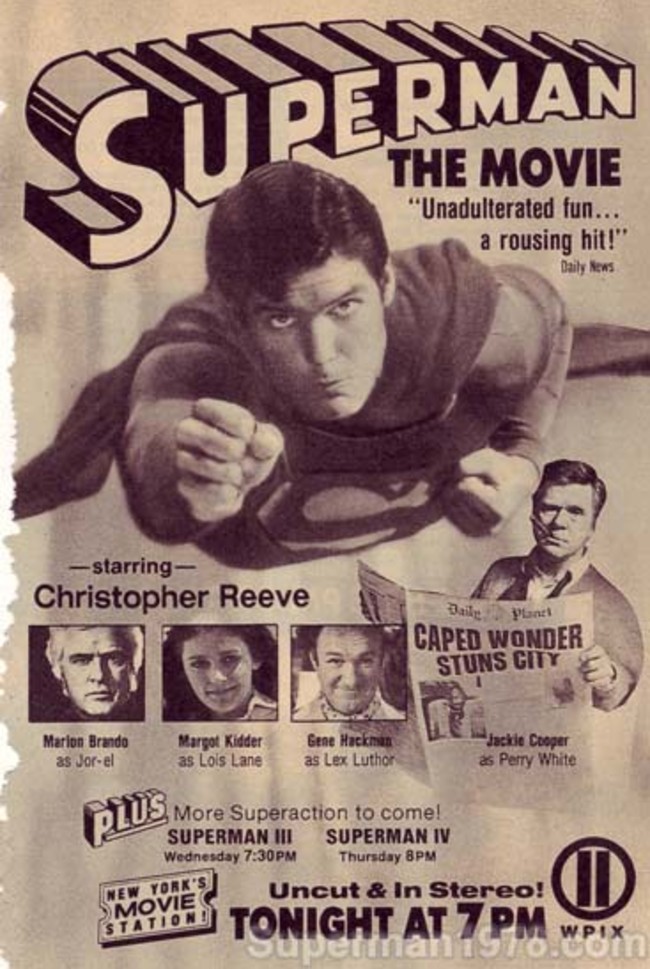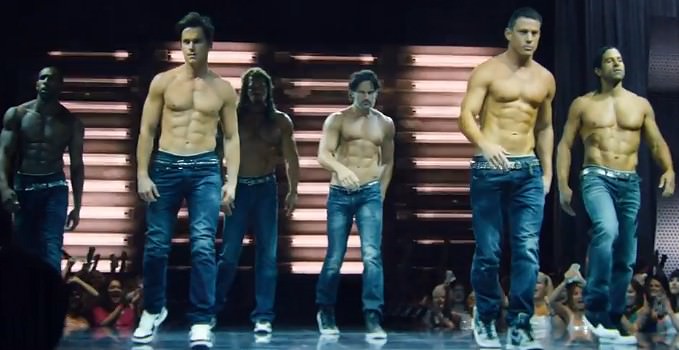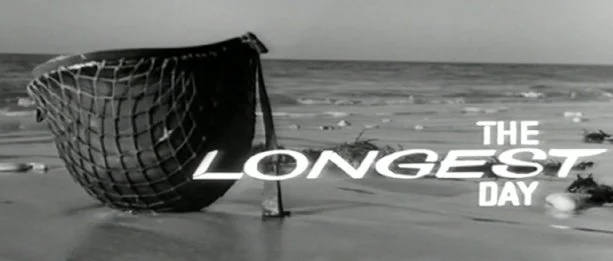Superman Flies High On The National Film Registry
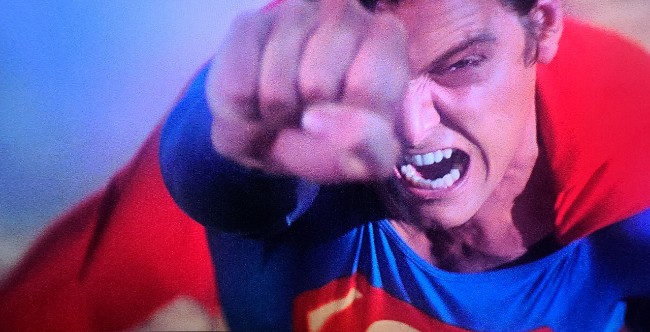
Superman landed on The National Film Registry in 2017. We do a deep dive of the movie and a review of the Blu ray from the Warner Archive Collection.
SUPERMAN
Decades before CGI filled extravaganzas, before connected universes, and billion dollar box office returns Richard Donner made us believe a man could fly. Superman flew onto screens December 15, 1978. More than forty years later Superman has cemented its place in cinema history and on the National Film Registry.
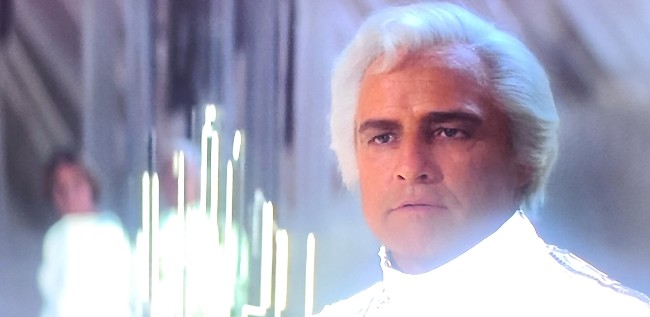
One of mandates of the National Film Board is to preserve movies that are “culturally, historically, and aesthetically significant.” Superman, the character, was already culturally significant before he was brought to the big screen. Created in 1938 by Jerry Siegel and Joe Shuster (Why do you think there’s an S on Superman’s chest?), Superman had been featured in comic books, movie serials, cartoons, and a popular television series. Their Superman was the last survivor of a doomed planet who fought for truth, justice, and the American way.
THE MOVIE
Superman is almost a movie of two halves: Krypton and earth, Clark Kent and Superman. The first part of the movie is more serious in tone than the second half. The first images in the movie we see are of giant heads on a screen listening to Jor-El (Malron Brando) state his case against three Kryptonians, General Zod (Terrance Stamp), Ursa (Sarah Douglas), and Non (Jack O’Halloran), who are charged with sedition. One after another the giant heads pass judgement with a loud booming “Guilty.” Their sentence is to be cast into The Phantom Zone where they will suffer “an eternal living death.”
While the three prisoners float in space inside a square mirrored prison Krypton is dying from the inside. Before Krypton explodes Jor-El sends his only son hurtling through space towards Earth. Considering it was the ‘70s Krypton exploding on screen was an impressive special effect. It’s also the start to a movie that will end on a particularly high comic book note.
Future Superman movies, not including the three Christopher Reeve sequels, avoided specifically stating Clark Kent crashed landed in Smallville. These movies do include Jonathan and Martha Kent, but by eliminating Smallville they have eliminated the juxtaposition of two worlds. Krypton is the technologically advanced alien world and Smallville is the Norman Rockwell like town surrounded by hard working farmers. It doesn’t get much more American than a town like Smallville.
It’s the town of Smallville where baby Kal-El is raised by Jonathan and Martha Kent. Jonathan is the bedrock of the Superman character. We want to think, and future movies would push the idea further, that Jor-El is what makes Superman Superman. But it’s Jonathan Kent that laid the foundation for the character who years later would be called the “Big Blue Boy Scout.”
Glenn Ford, like Marlon Brando, was already an acting legend when he was cast to play the role of Jonathan Kent. He had starred in one of the greatest westerns ever made, 3:10 to Yuma, the now film noir classic The Big Heat, and the social commentary film Blackboard Jungle. Ford brought a grounded, familiar presence to the role of Jonathan Kent. In the few scenes Ford was in we believed he taught Clark Kent not only how to be human, but to be a good human. Later scenes of Clark Kent wanting to send half his Daily Planet paycheck to Martha would prove this point out.
Jonathan Kent’s death is just as pivotal to the creation of Superman as being launched from Krypton. In Superman Jonathan doesn’t die from being sucked up into a giant tornado while young Clark Kent hides under an interstate underpass. Clark Kent could have saved Jonathan from the tornado. He’s fast enough to have run over, grabbed his father and returned to the safety of the underpass. But heart attacks are not tornadoes. Ford’s Jonathan died from the most human of ailments and not even Clark Kent’s speed or strength could save his father from dying before he hit the gravel driveway.
In the comic book world the death of a loved one often spurs the main character into becoming the superhero. Bruce Wayne’s parents were killed during a street mugging creating Batman, Peter Parker’s uncle was killed during a robbery creating Spider-Man, and Matt Murdock’s father Battling Jack Murdock was murdered because he didn’t throw a fight thus creating Daredevil. These superheroes become vigilantes to do a job police officers either couldn’t or wouldn’t do. Clark, by the definition of the word, did not become a vigilante upon the death of Jonathan Kent. Instead his death sent Clark on a journey of self discovery.
His journey leads him to The Fortress of Solitude. Technically, he throws a crystal from the spacecraft that brought him to earth deep into the North Pole creating The Fortress of Solitude. It’s while he’s here Clark discovers his biological father, his true identity, and his history. It’s also the first time we see Clark Kent, now Kal-El, in the famous blue tights with the red cape. It’s the last time Superman will be serious.
Clark Kent mysteriously appears in Metropolis, a fully formed reporter. Where did Clark Kent learn how to be a reporter? We can assume it was one of the things he learned while at The Fortress of Solitude. But when did he have time to work on his “snappy prose?” Being the fastest typists is no big deal when you’re as fast as Superman, but being able to whip out snappy prose is a learned skill. When did he have time between leaving The Fortress of Solitude and being hired by The Daily Planet to be published enough to have a resume to send? Does The Daily Planet hire just anyone off the street?
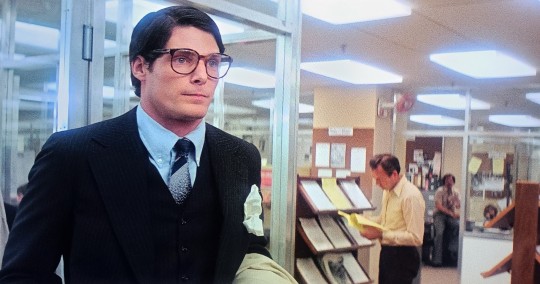
Maybe The Daily Planet does hire anyone off the street? It would explain why their star reporter has to rely on the staff photographer for spelling. Except it works in the confines of Superman. Lois Lane ( Margot Kidder, The Amityville Horror) is disorganized and maybe a little scatter brained, but so is Perry White, editor of The Daily Planet. The resulting scenes of editor Perry introducing Clark to Lois and Jimmy Olsen are some of the best scenes in Superman. The scenes are played at a rapid pace without a pause between the four actors.
Of course there would be no movie without the titular character showing up to do amazing things in the movie. It doesn’t take Superman long to become the talk of Metropolis after saving Lois Lane from a helicopter dangling from the side of a building. It’s here we get the classic scene of Superman saving Lois as she’s falling to her certain death.
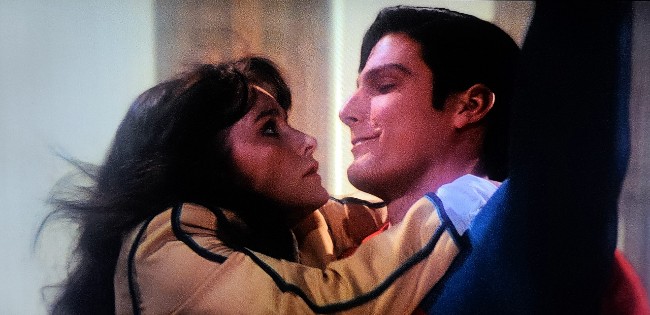
Superman’s heroics bring him to the attention of Lex Luthor. The tendency to play Lex Luthor has been to either play him crazy as Jesse Eisenberg did in Batman Vs. Superman or mean and evil like Kevin Spacey did in Superman Returns. Hackman’s Luthor isn’t crazy, mean, or evil; he’s simply a good comic book villian with a bad comic book-ish plan to become a real estate mogul.
Luthor’s plan is to denote nuclear missiles into the San Andreas fault causing most of the west coast to fall into the ocean. The result would make his worthless scrub land on the other side of the fault worth millions of dollars because as Luthor says, “Land. They just don’t make it anymore.” It’s a hokey plan, but nothing any more ridiculous than some of the doomsday plots in the comic book stories today.
If there is a downside to the Lex Luthor character it’s his henchman Otis. Otis feels like a character created to be Lex Luthor’s punching bag and for cheap laughs. The laughs are few, far between, and quickly get old. While not the best role of his career Ned Beatty does play the role of dim witted henchman quite well. The role of Otis was also a break from the more serious roles Beatty had played before Superman.
FLAWS IN THE SYSTEM
There’s a lot in Superman we just have to go with the flow on and rely on our willing suspension of disbelief. For example, how does Lex, Otis, and Lex’s girl Ms. Teschmacher manage to get ahead of the military escort to put in the wrong coordinates so the nuclear missiles will hit their intended targets? And with a wide load in tow? The trio would have to have the trailer and semi truck at the go and the right place to block the military escort? How does Lois Lane manage to be at the exact place and time to be caught in the aftermath of a nuclear explosion and how does poor Jimmy Olsen wind up on the Hoover Dam as it breaks apart from the earthquake caused by said nuclear explosions?
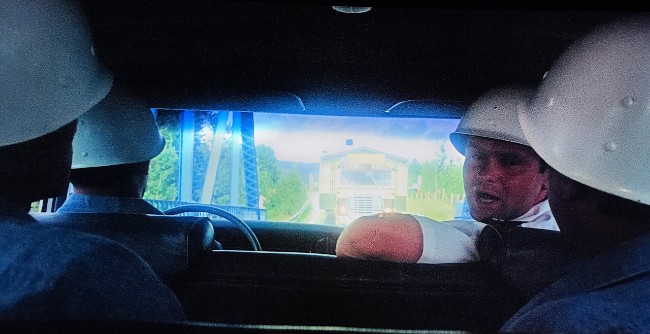
Lois, who we will see in later sequels get out of plenty of difficult situations, is buried under rock and debris as she’s swallowed by an opening crevice. Poor Lois has gone to the big newsroom in the sky. Or has she? A heartbroken Superman flies into earth’s atmosphere and starts to spin the earth backwards. Superman spinning the earth backwards is one of many iconic scenes in Superman.
TIME TRAVEL
Let’s just pretend spinning the earth backwards would turn back time and let’s pretend a lot of bad stuff wouldn’t happen when the earth started spinning backwards. We’ll even set aside the notion Superman knew the exact number of backwards revolutions it would take to get to the exact time before Lois was killed. Is time travel the worst plot device that could have been used to save Louis Lane?
Time travel presents a lot of problems not just scientifically but story wise. It’s an easy out when a writer has written himself into a corner and can’t get out of it. Unfortunately it has been used time and time again to cover a writer’s back side. The Marvel Comics Universe ended its years-long movie event using time travel to right all the wrongs.
We are willing and able to have a suspension of disbelief when it comes to comic book movies. It’s almost a requirement if we want to enjoy these types of movies. If not a big monster snapping his fingers to end humanity would be even more ridiculous than anything Lex Luthor could plan and a man who has super healing would be a convenient plot device. If we didn’t have a suspension of disbelief we would never have believed, flaws and all, a man could fly. However, some critics weren’t kind to Superman.
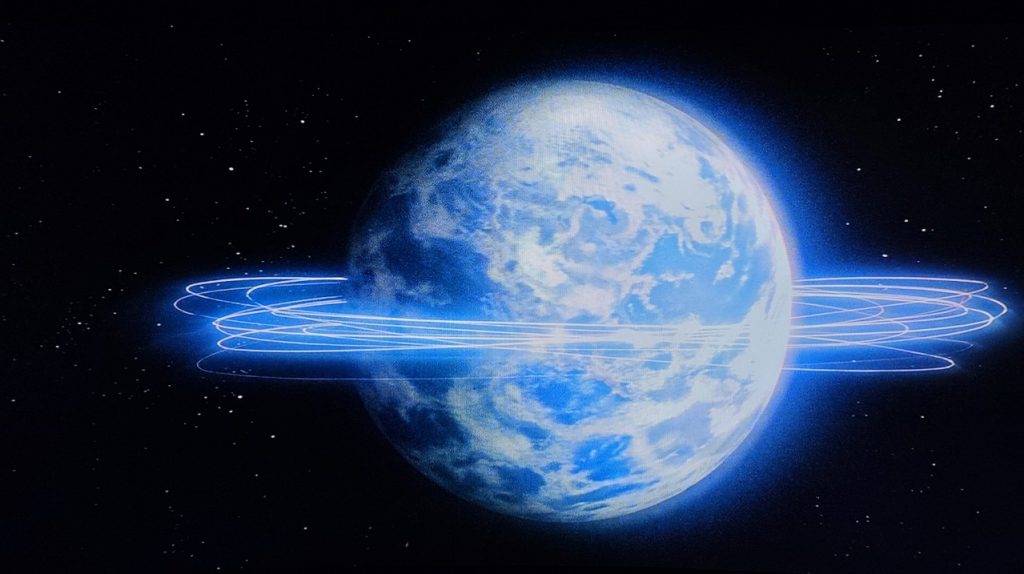
THE CRITICS
Pauline Kael called Superman a “70 mm version of kiddie matinee serial.” Maybe it is for the kiddies. Except, Kael ignored the obvious Superman as the Messiah parallel set up in the movie. She ignored the Jor-El as god giving his only son to the earth to save humanity too. A critic as adept as Kael was should have easily seen the obvious subtext. Donner didn’t highlight the image like Bryan Singer and Zack Snyder would years later in their movies, but it’s there for anyone to see who wants to see it. Kael refused to see it.
Kael wasn’t finished with tearing at Superman. John Williams had already been writing and conducting film and television music for twenty plus years when Superman was released. He had worked on Jaws, Close Encounters of the Third Kind, Alfred Hitchcock’s Family Plot, Midway, and Star Wars. Kael called Williams’s music, which would go on to become a classic movie score, “indifferently composed.” Not all critics were ready to cut off Superman at the cape. Gary Arnold, staff writer for the Washington Post, called Williams’s music “rousing.”
The naysayers were wrong about Superman. The movie would become one of the highest grossing films of the year. On a roughly 55-million dollar budget, which was a high budget at the time, Superman would gross more than 300-million dollars. That’s not a bad return on investment for a movie film critic Vincent Canby summed up as not having “a thought in the film’s head that would be out of place on the side of a box of Wheaties.”
Superman was the closest thing we had for years to a four color comic book come to life. It’s success showed there was a market for superhero movies. It would be another decade before the first credible superhero movies would appear on the big screen and decades before the technology would be available to bring a lot of comic book ideas alive. However, if it weren’t for Superman the movie landscape may have looked very different today. Superman was the movie that made it possible for all superhero movies to follow.
THE WARNER ARCHIVE COLLECTION
Some readers may remember Superman on the small screen. I am not one of those people. For it’s network debut forty additional minutes were added to the movie. In those days movies weren’t edited down to fit a set time schedule. Commercials were worked into the movie which means someone could have been sitting in front of their television for three plus hours watching Superman. Fortunately, Warner Archive has packaged the television event, still clocking in at almost three hours, and the director’s cut of the movie onto one disc.
The Warner Archive Collection Blu ray also includes three documentaries on the make of Superman, screen tests (Anne Archer as Lois Lane?), and a commentary of the movie with Richard Donner. Some of these features were included on the DVD release of the movie, but there’s still more included on their Blu ray edition than the newly released 4K edition. The picture quality is also top notch. Colors pop, explosions flare, and miniaturized water looks like it’s demolishing a small model town. In short, the Warner Archive Blu-ray is worth adding to your collection.
Year released- 1978
Year added on The National Film Registry- 2017

